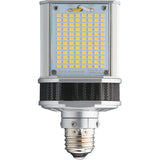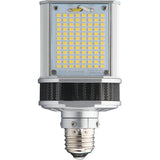Tips for Facility Managers On Evaluating a Transition to LED Lighting
Posted by Dave on for ProLampSales

Facility managers faced with a lamp replacement project may want to consider the LED option but worry about the reliability of the technology, higher initial costs and a predictable return on investment. Bosses may require convincing that now is the right time to adopt LED lighting for their facility.
While we are well past the "early adopter" phase of the new technology adoption curve, familiarity with the LED light source and its benefits may still be vague for many facility staff. Why risk your job on a hard sell to the bosses that may not work out when sticking with the conventional light sources you’ve always used is the safest bet?
This post may not change your mind about transitioning your facility today to LED lighting, but hopefully it will deepen your understanding of LED lighting benefits and give you a basis for making the case when the time is right.
LED Lighting Has Matured Significantly Over the Past Few Years
First, where do we stand in 2016 with LED building lighting technology? Most manufacturers now offer their fifth generation LED product — both LED replacement lamps and dedicated LED fixtures. The steep learning curve has leveled somewhat in the last couple of years with more reliable, consistent LED products. Specifications and testing protocols for lamp life, color temperature, lumen output, dimming and other metrics have approached standardization, at least for the major manufacturers.
Growing industry consensus about how to measure and present key specifications means that purchasers of LEDs can have more confidence today when comparing LEDs to other light sources then they could even three years ago.
In addition, every new generation of LED light bulbs brings with it more stable pricing. While buyer costs have declined over the years (as is often the case as new technology ramps up), more predictable pricing may be the most important trend for buyers to note today.
Along with improvements in the LED product itself, the focus of much lighting related research, monitoring of installations and standards writing, whether at government agencies, universities or lighting related associations has an overwhelming focus on LED lighting for buildings. This research and a growing archive of case studies helps the industry learn from mistakes and improve products.
In 2016 there are few within the industry that would dispute the notion that LED is the future of architectural lighting.
Key LED Benefits to Consider
Still the question remains, is the future now for my facility?
Here is a list of LED benefits to include (or exclude, depending on the facility) in the decision making process.
(1) Reduced energy costs
LED lighting can reduce electric costs by 20% to 50% or more depending on which current light sources are being replaced. A 90 watt PAR38 halogen can be replaced with a 17 watt LED PAR38 for a significant improvement in energy efficiency. However, a 32 watt T8 fluorescent also requires a 17 watt LED equivalent for a gain in efficiency but not at the same level as LED vs. halogen.
(2) Reduced maintenance costs
The life of LED replacement lamps and LED modules in dedicated fixtures extends much longer than incandescent/halogen, but marginally longer than some T8 fluorescent tubes.
With LEDs commonly rated at a 25,000 hour life (some claim 35,000 to 50,000 hours), the life of these products easily exceeds the typical life of 1000 to 2000 hours for incandescent and halogen. Long life translates into fewer bulb changes and lower maintenance costs for facilities. Savings on labor costs alone may justify the higher costs of LED equivalent lamps when they replace incandescent or halogen sources.
In many facilities fluorescent lighting predominates. While LED replacements for T8 fluorescent often claim a life expectancy between 40,000 and 50,000 hours, there are advanced T8 fluorescent systems that are rated at 40,000 hours. In addition, the retrofit to LED T8 may require electrical work to disable the ballast in the existing fixture (there are LED T8s that use the existing ballast and can directly replace the T8 fluorescent tube) so the initial costs may be higher than simply replacing the lamps. When making the case to replace T8 fluorescent systems with LED, a combination of reduced energy costs and marginally reduced maintenance costs must be considered.
(3) Improved color quality
LED lighting, a solid state technology, can be designed to produce illumination at all color temperatures. When replacing halogen with LED, a range of available options from 2700K to the normal halogen 3000K to a cooler 4000K / 5000K allow the facility manager to pick the desired color temperature either to match the halogen being replaced or to modify it to meet specific needs.
The same options apply to T8 LED replacements. In addition, RGB designed LED lamps can be controlled to change color temperatures to fit the circumstance.
This capability to precisely select and potentially manipulate the color temperature of the light source offers certain types of facilities, such as museums, a key benefit to include in the decision making about changing to LED lighting. It also provides some assurance, when the LED color temperature matches the existing light source, that a transition to LED can be done with minimal employee complaints.
(4) Less heat
You will often see the claim that LED lighting produces no heat. It is true that LED lamps do not produce the infrared radiation that makes touching the face of a halogen light bulb inadvisable. In applications where food, textiles or art is being illuminated, this lack of IR heat can be an advantage. However, heat is produced within the LED lamp itself due the inefficiencies of the semi-conductor process that generates the light.
95% of the energy consumed by a 100 watt incandescent light bulb results in heat. It may be surprising, given the frequent claim that LEDs produce no or little heat, that 80% to 85% of the input energy results in heat within the LED lamp.
The presence of this heat is why LED light bulbs often have a visible heat sink which functions to dissipate the build up of heat inside the lamp. Excess heat will reduce lamp life and even alter the color characteristics of the light.
The bottom line when it comes to heat generated by the lights revolves around the application. If it is desirable to eliminate IR, then switching from halogen to LED could be a significant benefit. However, for most general lighting applications, the reduction in heat build-up within the building envelope from LED lighting may result in marginally reduced cooling costs compared to other light sources but the impact may not be substantial.
(5) No UV
General lighting LED products do not produce ultraviolet wavelengths. This may be an important advantage for facilities such as museums that contain UV sensitive material.
(6) Instant ON Light
LED lamps do not require a warm up time. LEDs reach full brightness instantly over a very broad temperature range. For facilities using HID light sources this could be an advantage. In a power outage, the restart time for metal halide lamps can be several minutes. There are high lumen LED replacements for HID available for high bay fixtures. These replacements may make sense for warehouses, manufacturing plants, and other applications where any worker down time brings a significant cost.
All Facilities Should At Least Evaluate the LED Option
Ultimately, the decision to transition a facility to LED lighting will vary depending on the ROI resulting from a mix of these benefits that apply for the specific facility. Today many facilities have already made the transition. For those that have not, the LED option may in fact not be cost effective today, but it should at least be part of the conversation.
Featured Products (View All)
0 Comments




